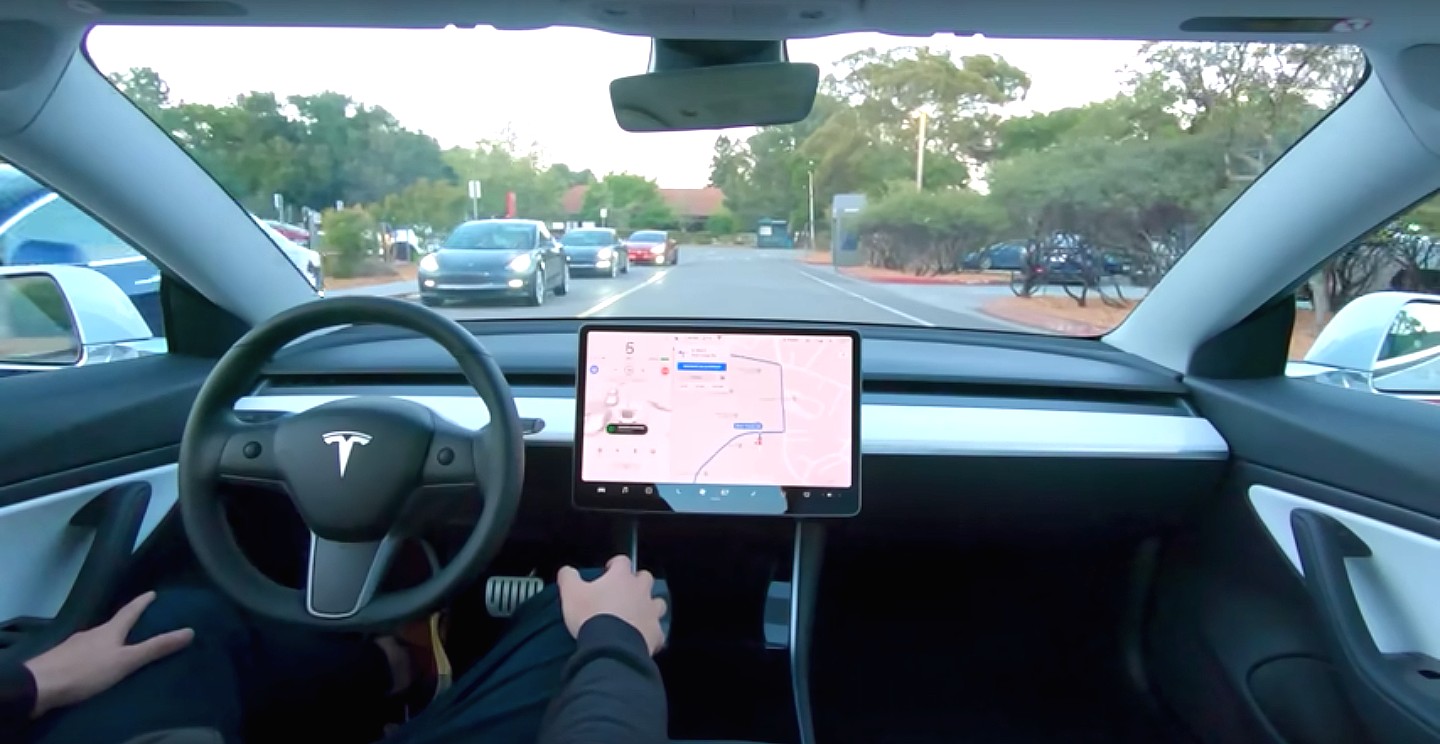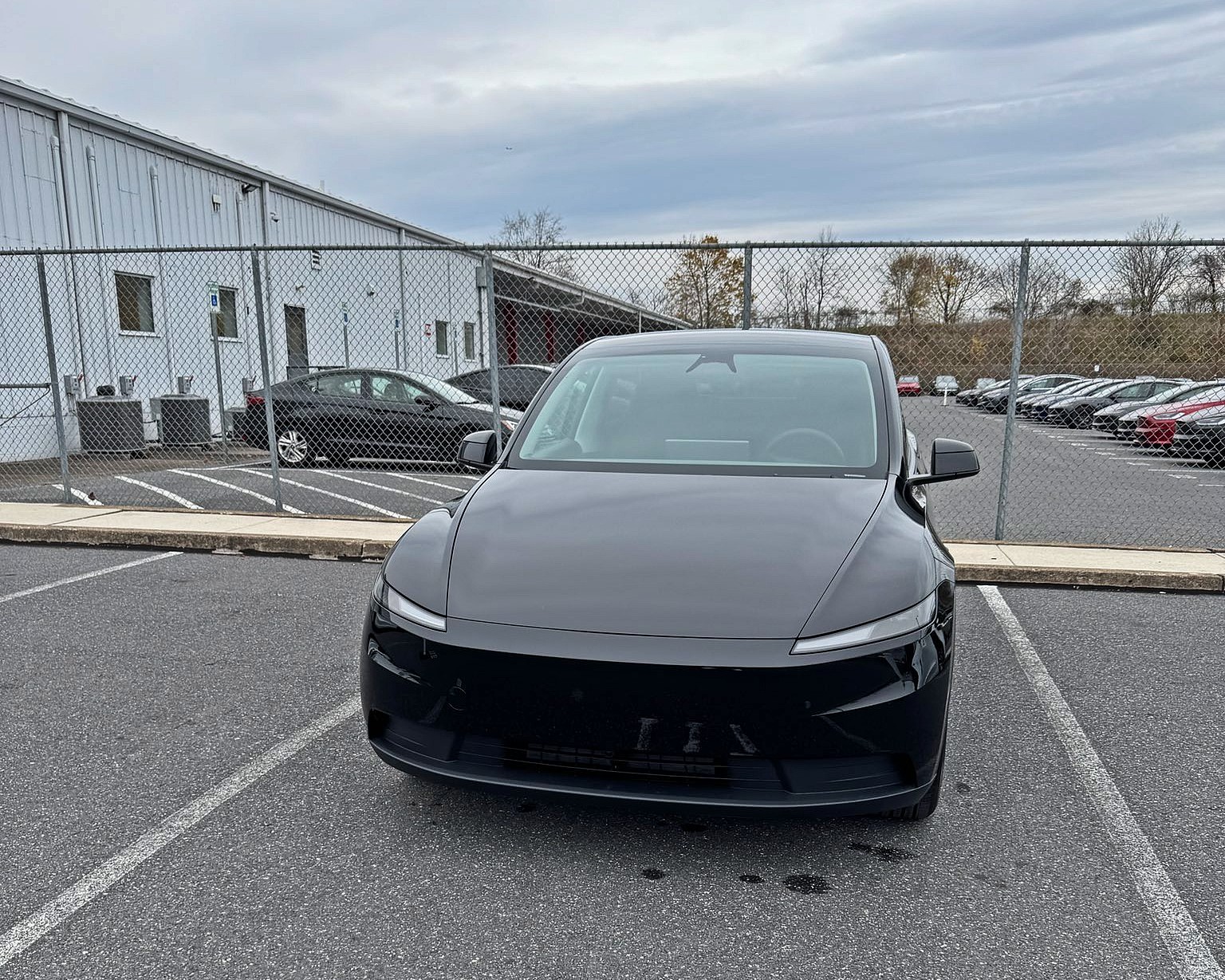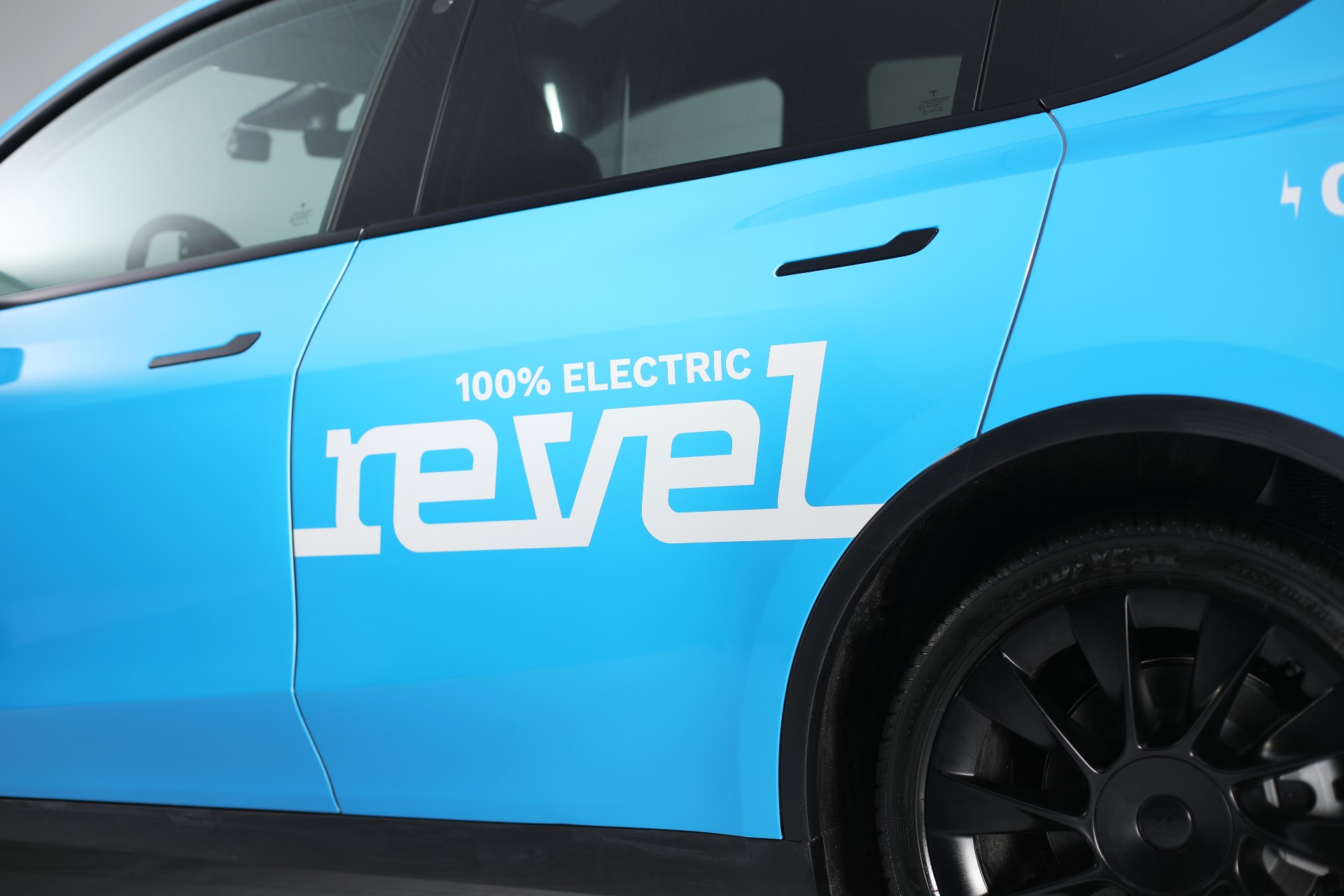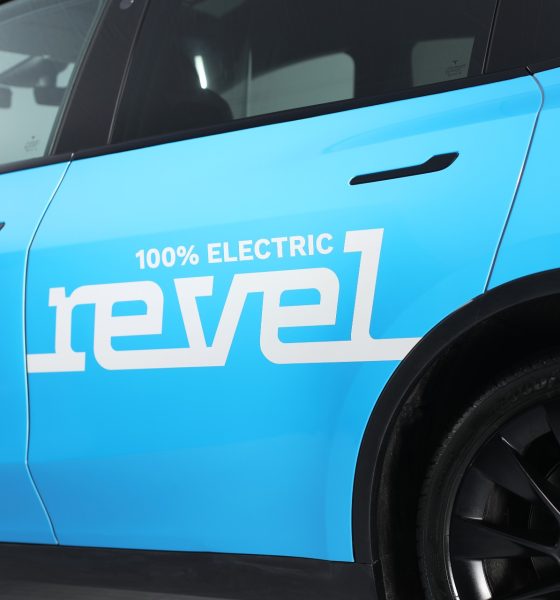This is a preview from our weekly newsletter. Each week I go ‘Beyond the News’ and handcraft a special edition that includes my thoughts on the biggest stories, why it matters, and how it could impact the future.
Earlier this week, there was plenty of talk about the Revel taxi fleet in New York City, comprised of 50 Tesla Model Y all-electric crossovers that would contribute to the ride-sharing services that the Big Apple has long been accustomed to over the past century. As the automotive sector has transitioned to a more sustainable look and feel, taxi companies are also putting their hand in the cookie jar, adding sustainable vehicles to their fleets, and taking gas-powered machines off the road.
Revel is an independent company attempting to make this happen. The company has 50 Model Y taxis ready to take on the streets of Manhattan and the other boroughs of New York. However, reports circulated earlier this week that the New York City Taxi and Limousine Commission blocked this possibility overwhelmingly with a five-to-one vote.
New York City Taxi and Limousine Commission: A Giant Game of Telephone
While the reports from various media outlets, including our own, highlighted the spectacle, which seemed to be an incredible chance of corruption, there was actually a huge misunderstanding. New York City TLC’s Deputy Chief of Public Affairs, Allan Fromberg, took some time out of a busy Thursday to talk to me, clarifying the situation that has been misconstrued since its original report.
Tesla Model Y taxi fleet successfully blocked by NY commission
After getting in touch with Mr. Fromberg on Thursday, we talked about the initial reports. “The whole narrative that Revel would have to buy 50 gas cars to then convert to EVs is just a giant game of telephone. In fact, for Revel to bring on its 50 BEVs, they would have to replace 50 existing, already-licensed vehicles, and not new vehicles.”
Initial reports indicated that TLC Commissioner Aloysee Heredia Jarmoszuk stated that congestion was why Revel wasn’t granted licenses. In fact, this is true. Revel was never required to purchase 50 gas vehicles, which didn’t make much sense from the get-go. In my initial communication to Mr. Fromberg, I stated that the contradictory nature of the TLC’s implied decision to block Revel’s Model Y fleet because of congestion, but then suggest 50 additional gas-powered vehicles needed to be purchased didn’t make much sense.
Fromberg agreed and said that this misconception was due to the aggregation of media reports looking to push out this controversial angle of the story quickly.
Mr. Fromberg then explained what the vote on Tuesday evening entailed, straight from the TLC Commissioner’s mouth.
2018 Legislation: The Taxi Cab “Cap”
Ms. Jarmoszuk said:
“First and foremost, no one and no entity has been blocked. The public meeting/vote was neither about electric vehicles nor about any particular company nor about car models. Rather, the public meeting was about vehicle licenses, which are presently capped since the market is saturated and distressed, with low performance as a result of the pandemic and previous market stressors. Presently, there are nearly 100K vehicle licenses, which is too large a supply for current passenger demand. The public meeting was about ensuring mechanisms to properly manage applications for new/additional licenses against current ridership numbers/needs.”
This is actually in reference to series of five pieces of legislation that were passed in 2018. According to the New York City Office of the Mayo, on August 14th, 2018, Mayor Bill de Blasio signed the following pieces:
144-B: Requiring the TLC to stop issuing for-hire vehicle licenses for 12 months, to study congestion and various aspects of the industry, and after the study, allows the TLC to establish vehicle utilization standards and regulate the number of for-hire vehicle licenses;
634-B: Waiving licensing fees for accessible taxi-cabs and for-hire vehicles;
838-C: Pertaining to the licensing and regulation of high-volume for-hire vehicle services;
890-B: Directs the TLC to establish rules to provide minimum payments to high-volume for-hire vehicle drivers;
958-A: Reducing penalties for unauthorized street hails.
Really, 144-B, 634-B, 838-C, and 890-B are the four pieces that are relevant to this story. In 2018, 144-B halted the licensing of any additional “For-Hire” vehicles, meaning taxis or ride-hailing vehicles. Simply put, there was an incredible number of vehicles on the streets of New York, and congestion was becoming a real issue there. The “cap” limit on the number of vehicles was enforced in 2018 and was set to last one year. Mr. Fromberg informed me that this legislation has been extended and renewed several times and is still effective to this day. Therefore, the City still will not license any additional vehicles. When one fails or loses its license, a new vehicle takes its place.
There are several other reasons for this, including fair wages for drivers and affordability for taxi companies. But, unfortunately, drivers were suffering and still are due to the COVID-19 pandemic. While many of the economic negativities are finally beginning to subside, 2020 was an ugly year for the NYC taxi sector. Many drivers weren’t making enough money to afford loan payments on medallions. Unfortunately, some of these drivers took their own lives, and it is an absolute tragedy that this occurred.
With that being said, taxi drivers are hard-working, and they deserve to make enough money to feed their families. In the 2018 passing of these legislative pieces, De Blasio said, “We’re putting hardworking New Yorkers ahead of corporations. We are taking immediate action for the benefit of more than 100,000 hard-working New Yorkers who deserve a fair wage and halting the flood of new cars, grinding our streets to a halt.” The changes increased take-home pay for drivers by approximately 20 percent on average — more than $6,000 per year.
With all of that being said, New York City is operating with a substantial number of taxis, and the TLC has granted nearly 100,000 vehicle licenses. Before any more vehicles can obtain one of these licenses, some of the current vehicles must lose their licenses through expiration or vehicle removal in a company’s fleet. When 50 licenses open up, Revel will have the ability to obtain them, giving the company full rights to operate as a ride-sharing service, just as it aims to do.
To Mr. Fromberg’s knowledge, there would be no cost for Revel to go through the normal administrative procedure to obtain the licenses.
Revel’s Response: EV Taxis are a necessity to NYC
Revel CEO Frank Reig is under the impression that the TLC is operating under “shortsighted bureaucracy and entrenched interests,” according to a Tweet from Wednesday night.
After the Tuesday hearing, Reig said:
“At today’s hearing, the Taxi and Limousine Commission offered no evidence or analysis to support ending the EV exemption. The Commissioners sat through almost 3 hours of testimony on all sides yet asked zero questions and spent zero time deliberating before making a policy decision with profound consequences. The TLC never intended to consider what drivers and New Yorkers had to say, and only cared about jamming through this vote on Primary Day with as little scrutiny as possible. This decision doesn’t change the fact that New York City needs an alternative to the predatory leasing system that exploits drivers and pollutes our environment, and Revel is exploring ways to accomplish that.”
Revel told Teslarati earlier today that it is aware that the TLC is not recommending the purchase of 50 gas-powered cars. The company is also aware that the TLC has capped the number of licenses it would issue. In order to encourage the adoption of electric cars, Revel spokespeople said that additional licenses would be given to wheelchair-accessible vehicles and EVs. A few hundred EVs have been added to the NYC Taxi fleet in the past two years, but these cars only account for .5% of the total number of For-Hire vehicles on NYC’s streets.
Tesla Model 3 wins hearts as famed NYC Taxi, picks up where Nissan Leaf couldn’t
This rule is brought up every six months and was last addressed and subsequently renewed in February. That means that it was due for review in August. However, the TLC brought the issue to light early and revoked the rule. The TLC says that if Reval wants to operate a rideshare service with its fleet of 50 Model Ys, they will have to obtain the licenses from displaced and no-longer-active taxis in the city.
Revel states that it would take two to three additional vehicles off of the street because the company will hire TLC-licensed drivers, who will no longer lease gas-powered vehicles. In addition, revel owns the vehicles, and different drivers will use the same car through different shifts, which could become a long-term advantage for the TLC as fewer cars will be on the street.
This would also line up with the Legislature items 634-B and 890-B, which would alleviate short-term leases and provide drivers with guaranteed wages, benefits, and vacation time.
The Bottom Line
The issue is this: Congestion is a real issue in the city. And while EVs only making up .5% of the total taxi fleet in the Big Apple, there is evidently no room for more vehicles, of any kind, in the City. Over time, the concentration of EV Taxis in the City that Never Sleeps will surely rise, but the existing vehicles need to be removed from the licensing pool before Revel can unleash its 50 all-electric Model Y taxis.
To summarize it easily, Fromberg said: “The TLC is fully committed to a 100% electrified future, just not at the cost of additional congestion.”
A big thanks to our long-time supporters and new subscribers! Thank you.
I use this newsletter to share my thoughts on what is going on in the Tesla world. If you want to talk to me directly, you can email me or reach me on Twitter. I don’t bite, be sure to reach out!
-Joey
On behalf of the entire Teslarati team, we’re working hard behind the scenes on bringing you more personalized members benefits, and can’t thank you enough for your continued support!

News
Tesla launches crazy Full Self-Driving free trial: here’s how you can get it

Tesla is launching a crazy Full Self-Driving free trial, which will enable owners who have not purchased the suite outright to try it for 30 days.
There are a handful of stipulations that will be needed in order for you to qualify for the free trial, which was announced on Thursday night.
Tesla said the trial is for v14, the company’s latest version of the Full Self-Driving suite, and will be available to new and existing Model S, Model 3, Model X, Model Y, and Cybertruck owners, who will have the opportunity to try the latest features, including Speed Profiles, Arrival Options, and other new upgrades.
🚨 Tesla is launching a free 30-day trial of Full Self-Driving in North America for owners.
It includes every model, but you need v14.2 or later, and you cannot have already purchased the suite outright. https://t.co/8CNmxxOkVl
— TESLARATI (@Teslarati) November 27, 2025
You must own one of the five Tesla models, have Full Self-Driving v14.2 or later, and have an eligible vehicle in the United States, Puerto Rico, Mexico, or Canada.
The company said it is a non-transferable trial, which is not redeemable for cash. Tesla is reaching out to owners via email to give them the opportunity to enable the Full Self-Driving trial.
Those who are subscribed to the monthly Full Self-Driving program are eligible, so they will essentially get a free month of the suite.
Once it is installed, the trial will begin, and the 30-day countdown will begin.
Tesla is making a major push to increase its Full Self-Driving take rate, as it revealed that about 12 percent of owners are users of the program during its recent earnings call.
Tesla CFO Vaibhav Taneja said during the call:
“We feel that as people experience the supervised FSD at scale, demand for our vehicles, like Elon said, would increase significantly. On the FSD adoption front, we’ve continued to see decent progress. However, note that the total paid FSD customer base is still small, around 12% of our current fleet.”
Earlier today, we reported on Tesla also launching a small-scale advertising campaign on X for the Full Self-Driving suite, hoping to increase adoption.
Tesla Full Self-Driving warrants huge switch-up on essential company strategy
It appears most people are pretty content with the subscription program. It costs just $99 a month, in comparison to the $8,000 fee it is for the outright purchase.
News
Tesla Full Self-Driving warrants huge switch-up on essential company strategy

Tesla Full Self-Driving has warranted a huge switch-up on an essential company strategy as the automaker is hoping to increase the take rate of the ADAS suite.
Unlike other automotive companies, Tesla has long been an outlier, as it has famously ditched a traditional advertising strategy in favor of organic buzz, natural word-of-mouth through its production innovation, and utilizing CEO Elon Musk’s huge social media presence to push its products.
Tesla has taken the money that it would normally spend on advertising and utilized it for R&D purposes. For a long time, it yielded great results, and ironically, Tesla saw benefits from other EV makers running ads.
Tesla counters jab at lack of advertising with perfect response
However, in recent years, Tesla has decided to adjust this strategy, showing a need to expand beyond its core enthusiast base, which is large, but does not span over millions and millions as it would need to fend off global EV competitors, which have become more well-rounded and a better threat to the company.
In 2024 and 2025, Tesla started utilizing ads to spread knowledge about its products. This is continuing, as Full Self-Driving ads are now being spotted on social media platforms, most notably, X, which is owned by Musk:
NEWS: Tesla is running paid advertisements on X about FSD (Supervised). Here’s an ad they started running yesterday: pic.twitter.com/IHVywLMyTd
— Sawyer Merritt (@SawyerMerritt) November 25, 2025
Interestingly, Tesla’s strategy on FSD advertising is present in Musk’s new compensation package, as the eleventh tranche describes a goal of achieving 10 million active paid FSD subscriptions.
Full Self-Driving is truly Tesla’s primary focus moving forward, although it could be argued that it also has a special type of dedication toward its Optimus robot project. However, FSD will ultimately become the basis for the Robotaxi, which will enable autonomous ride-sharing across the globe as it is permitted in more locations.
Tesla has been adjusting its advertising strategy over the past couple of years, and it seems it is focused on more ways to spread awareness about its products. It will be interesting to see if the company will expand its spending even further, as it has yet to put on a commercial during live television.
We wouldn’t put it out of the question, at least not yet.
News
Tesla Model Y Standard: first impressions from a Premium owner

Tesla was nice enough to hook us up with the new Model Y “Standard” trim for a few days, and while we’ll be sure to fill you in on the full experience in the coming days, there are a lot of differences we noticed right off the bat, which make the ownership experience different from the “Premium” configuration level.
I purchased a Model Y Long Range All-Wheel-Drive back in August and took delivery just two weeks later. Through the first three months of owning my car, I’ve come to love so many things about the Tesla experience.
I traded my ICE vehicle for a Tesla Model Y: here’s how it went
However, I was interested in experiencing the affordable trim and seeing whether I would miss any of the voided features of the “Premium” Model Y.
Through the first 24 hours, here are my first impressions of the Model Y Standard as a Premium trim level owner:
Overall Aesthetic
The lack of a light bar is not something that is a dealbreaker. In fact, I would argue that the Model Y Standard’s more traditional headlight design is just as pleasing from an aesthetic standpoint.
The car is great looking from top to bottom; there are not a substantial number of differences besides the lack of a lightbar on both the front and the back of the car.
Overall, it is a very sleek vehicle, but the major changes are obviously with the interior.
Interior Changes
This is where the big differences are, and some of the things I’ve gotten used to in the Premium are not included. If I didn’t have a Premium Model Y already, I’m not sure I’d miss some of the things that are not present in the Standard trim, but I believe I’d get annoyed with it.
First impressions:
✅ Interior is excellent. I definitely miss the additional storage already that is available in my Premium. I could definitely get over it though
✅ Noticeable step down in sound system. Long Time by Boston absolutely cranks in the Premium; it’s still very… https://t.co/JNWvxTd8p1
— TESLARATI (@Teslarati) November 25, 2025
Storage
The Premium has a large storage compartment between the cupholders and the wireless charger, which is not present in the Standard trim. Instead, it is more like the Cybertruck, as there is a pass-through and floor storage.
I think that the pass-through is nice, but the additional storage is something I take advantage of, especially as someone who films Full Self-Driving videos, which requires hauling mounts, GoPros, and other accessories.
The sleekness of the Premium trim is also something I prefer; I really enjoy having the ability to close those compartments and cover the cupholders.
Obviously, this is a really trivial issue and not something that is substantially impactful from an ownership experience. If I weren’t already an owner, I am not sure I’d even have something to complain about.
Material Differences
The Premium trim seats are completely Vegan Leather, which I really do like, even as someone who doesn’t really love leather seats due to their temperature dependency.
The Standard trim features a Textile and Vegan hybrid, which has half of the seat a different material than the other.
The material is very similar to what I had in my previous car, a Bronco Sport. It was very durable, easy to clean, dried quickly, and hid a lot of things that leather does not, like oils from your skin, which constantly require attention to keep your interior looking fresh.
The wireless charger is also a different material, as the Premium features an Alcantara material on that. The Standard has a rubberized and textured backing, which looks good, too. They’re both more than suitable.
Other Missing Features
The Standard lacks a few minor things, most noticeably is the ambient lighting. The biggest change, however, and something I really miss, is the glass roof.
A lot of people told me that when I got my Model Y, I wouldn’t even notice the glass roof after a few weeks. That could not be further from the truth. I look out of it all the time, and it’s one of my family’s favorite parts of the car.
My Fiancè and I really love parking and watching Netflix when we pick food up, especially when it’s raining, because the glass roof gives such a great view.
We also loved it as Fall arrived, because it was great to look at the foliage.
Buy the Tesla.
Enjoy the glass roof. pic.twitter.com/r2GDyOEEWu
— TESLARATI (@Teslarati) October 28, 2025
Bigger Differences
There are also a handful of very noticeable differences from the overall cabin experience, especially with the sound system.
Much Weaker Sound System
The Model Y Standard has just 7 speakers and 1 amp, with no subwoofer. This is a significant step down from the 13-15 speakers in the Premium Long Range AWD Model Y, the 2 amps it comes with, and 1 subwoofer in the trunk.
I usually like to listen to Long Time by Boston to test out a sound system, and it was noticeably weaker in the Standard. It was missing a big portion of the umph that is provided by the Premium’s sound system.
Cabin Noise
It feels like the Cabin Noise is definitely more noticeable in the Standard, which is something I really love about my Model Y. It is able to dampen so much road noise from louder cars, and I don’t feel as if it is very quiet in the Standard.
This is perhaps the biggest make-or-break for me with this car. I truly have been spoiled by how quiet the cabin is in the Premium, and it’s due to the lack of acoustic-lined glass in the Standard.
I will be doing a more in-depth review of the Model Y Standard, especially with ride quality, later this week.











